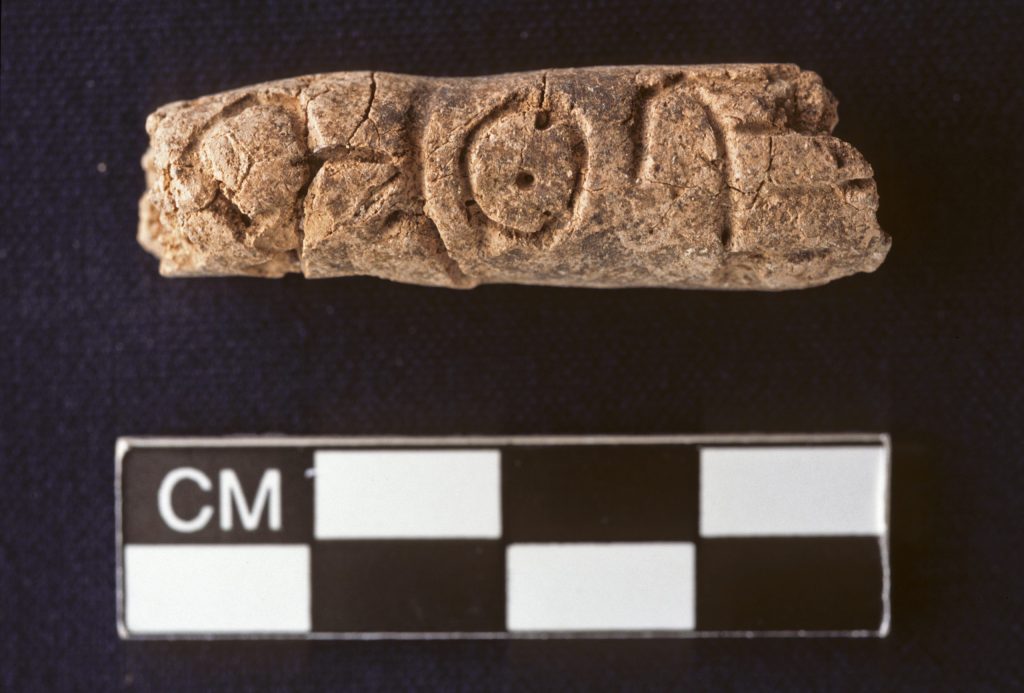The earliest known example of alphabetic writing has been discovered etched onto small clay cylinders in an ancient Syrian tomb, which was excavated by researchers from Maryland’s Johns Hopkins University. The characters are neither numerical nor cuneiform (which is the world’s earliest form of writing, predating Egyptian hieroglyphics and first used more than 5,000 years ago). Thus, they are considered a breakthrough in the research of written language.
Carbon-14 dating confirmed that the cylinders are over 4,000 years old, dating back to around 2400 B.C.E. This makes them around 500 years older than the previous record-holding scripts. Glenn Schwartz, an archaeology professor at the university who co-directed the excavations, noted, “this new discovery shows that people were experimenting with new communication technologies much earlier and in a different location than we had imagined before now.”
“Alphabets revolutionized writing by making it accessible to people beyond royalty and the socially elite. Alphabetic writing changed the way people lived, how they thought, how they communicated,” said Schwartz. “Previously, scholars thought the alphabet was invented in or around Egypt sometime after 1900 B.C.E. But our artifacts are older and from a different area on the map, suggesting the alphabet may have an entirely different origin story than we thought.”
Alphabetic writing offered those illiterate to hieroglyphics—a system of over 1,000 symbols which was mastered by a very small number of society’s elite—the opportunity to read and write.
Schwartz led the team who discovered the clay cylinders during a 16-year-long excavation at Umm-el Marra (possibly the ancient city of Tuba). Umm-el Marra, in modern north-western Syria, was the largest site on the Jabbul Plain during the Bronze Age and was occupied consistently from the mid-3rd millennium until the late 2nd millennium B.C.E. The city was a major trade location with two busy routes passing through. The excavation was part of a collaboration with the University of Amsterdam in which researchers were studying the development of cities in the area during the early Bronze Age.
The archaeology team discovered a series of ancient tombs in an elite mortuary complex, dating between 3500 and 2000 B.C.E. During a dig at one of the tomb sites, they found remains accompanied by jewelry made from precious metals, a spearhead, stoneware, and the four finger-length clay cylinders. The quality of the items buried with the deceased in the complex suggests that it may have been a burial place for royalty.
The cylinders were found scattered around the room rather than all together and were lightly baked and perforated. Schwartz suggested this could mean that there was previously, “a string tethering them to another object to act as a label… Maybe they detail the contents of a vessel, or maybe where the vessel came from, or who it belonged to. Without a means to translate the writing, we can only speculate.” It is believed that the marks were made with a stick or reed as opposed to a purpose-made stylus, as Schwartz described them as “relatively crude.”
This discovery of the world’s oldest alphabet was made in 2004, but Schwarz finally presented his findings at the American Society of Overseas Research’s Annual Meeting on November 21.
Professor Christopher Rollston, a scholar of the ancient Near East, said when writing about the Tell Umm-el Marra excavations in 2021 that the problem with attempting to decipher the cylinders, and any early alphabetic text, is “[among other things] the brevity of most of the texts at our disposal.” But, despite the hurdles in the way of translation, “these inscriptions from Umm el-Marra do seem to be game changers and these should and will be a component of all future debates and discussions about the world’s first use of an alphabetic writing system.”
